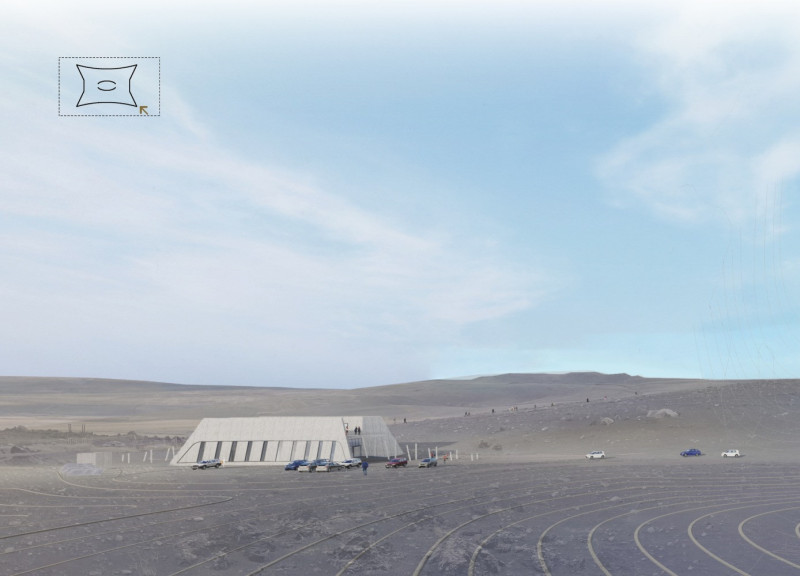5 key facts about this project
The Gate of Hverfjall Volcano is situated in the Mývatn region, where it establishes a connection with the unique volcanic landscape. Functioning as a coffee shop, it offers visitors an opportunity to relax while also providing information about the surrounding geological features. The design concept centers on the idea of a gate, representing a passage into the volcano itself. This approach enhances the experience of visitors as they explore the natural environment.
Site Engagement
The coffee shop is thoughtfully oriented to capture views of Mývatn Lake. This design choice aims to integrate the visual beauty of the lake into the overall visitor experience. Inspired by Japanese Zen Gardens, the landscaping includes aligned small rocks that mimic the gentle waves of the water. This element evokes a calm atmosphere, encouraging visitors to connect more deeply with the landscape.
Multifunctional Spaces
Beyond the coffee shop, the design accommodates a variety of activities. Spaces are included for camping, stargazing, and outdoor exhibitions, broadening the potential experiences for visitors. By offering diverse functions, the project encourages people to interact with nature in different ways, enhancing their time spent in the area.
Material Responsiveness
Sustainability plays a key role in the choice of materials used in the design. A steel structure is selected for its strength and construction efficiency. The use of local timber adds a sense of place and connection to the region. Additionally, volcanic concrete ties the architecture to the local geology, reinforcing the relationship between the built form and the landscape. Heating is provided by natural springs, while strategically placed side-roof windows allow for effective ventilation and energy conservation.
Visual Flow
The layout of the site follows the natural contours of the land, guiding visitors smoothly as they move through the area. This design respects the landscape and creates an engaging experience. The architectural form incorporates natural shapes and lines that reflect the nearby volcanic features. Attention to detail at entry points enhances the connection with the environment, encouraging a sense of exploration.






















































